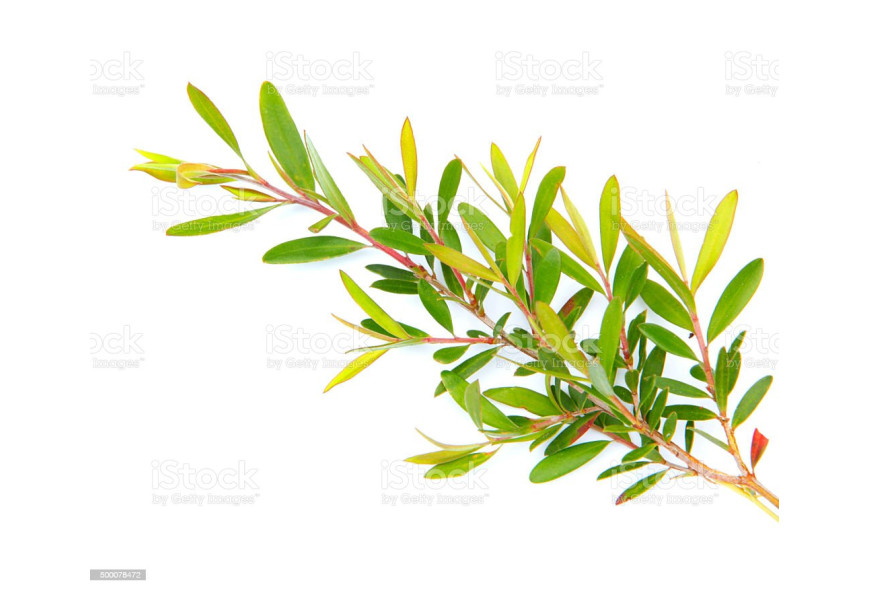Uses of Tea Tree Oil Part - I
Tea Tree Oil
Tea Tree Oil is inexpensive and safe when used as directed.
What is tea tree oil and how does it work?
Tea tree oil comes from the leaves of Melaleuca alternifolia, a small tree native to Queensland and New South Wales, Australia.
Although Melaleuca alternifolia is known as the tea tree, it should not be confused with the plant whose leaves are used to make black, green, and oolong tea.
Tea tree oil has been used as a traditional medicine by the Aboriginal people of Australia for centuries. These native Australians crush tea tree leaves to extract the oil, then inhale it to treat coughs and colds or apply it directly to the skin for healing.
Today, tea tree oil is widely available as a 100% undiluted, or neat, oil. Diluted forms are also available, ranging from 5–50% strength in products designed for the skin.
Tea tree oil contains a number of compounds, including terpinen-4-ol, that have been shown to kill certain bacteria, viruses, and fungi.
Terpinen-4-ol also appears to increase the activity of your white blood cells, which help fight germs and other foreign invaders.
These germ-fighting properties make tea tree oil a valued natural remedy for treating bacterial and fungal skin conditions, preventing infection, and promoting healing.
Buy online pure and natural Tea Tree Oil
25 ml pack, Free All India Delivery.
https://lnkd.in/gHYAduvj
Read on to learn about the many uses and benefits of this oil.
Tea tree oil makes an ideal natural hand sanitizer.
Studies have shown that it kills several common bacteria and viruses responsible for causing illness, including E. coli, S. pneumoniae, and H. influenzae (
In fact, a study testing several types of handwash shows that adding tea tree oil to the cleansers boosted their effectiveness against E. coli(
Studies continue to confirm that hand sanitizers with tea tree oil are effective for hand disinfection, killing bacteria without antibiotics (
Here is a simple recipe to make your own moisturizing, all-natural hand sanitizer using tea tree oil.
Tea tree oil may help keep pesky insects away.
One study found that 24 hours after being treated with tea tree oil, cows had 61% fewer flies than cows not treated with tea tree oil (
Tea tree oil is used to keep ants off of produce in agriculture (7).
It is also an effective mosquito repellent (8).
A test-tube study revealed that tea tree oil had a greater ability to repel mosquitoes than DEET, the most common active ingredient in commercial insect repellents (
Try this easy-to-make insect repellent using tea tree oil and other natural ingredients.
Tea tree oil’s antibacterial effects may help control underarm odor related to perspiration.
Sweat itself does not smell. However, when secretions from your sweat glands combine with bacteria on your skin, a moderate to strong odor is produced.
Your underarm area contains a large concentration of these glands and is mainly responsible for what is commonly referred to as body odor. Tea tree oil’s bacteria-fighting properties make it an ideal natural alternative to commercial deodorants and antiperspirants.
Here is a safe and effective natural deodorant that can be made from tea tree oil and a few other ingredients.
Injuries that result in broken skin make it easy for germs to enter your bloodstream, which can lead to infection.
Tea tree oil can be used to treat and disinfect minor cuts and abrasions by killing S. aureus and other bacteria that can cause infection in open wounds (
To disinfect a cut or scrape, follow these steps:
- Clean the cut thoroughly with plain soap and water.
- Mix one drop of tea tree oil with one teaspoon of coconut oil.
- Apply a small amount of the mixture to the injury and cover with a bandage.
- Repeat this process once or twice daily until a scab has formed.
In addition to preventing infection in cuts and abrasions, tea tree oil may also encourage wound healing.
Research has shown that tea tree oil helps reduce inflammation and triggers the activity of white blood cells that are instrumental in the healing process (
Tea tree oil is a known antibacterial, antifungal, and anti-oxidant, and these actions will help reduce inflammation and enhance healing (12).
In a small study of 10 people with wounds, adding tea tree oil to conventional wound treatment led to decreased healing time in all but one participant (
A few drops of tea tree oil can be added to wound dressing each time a new dressing is applied.
Tea tree oil can be a powerful weapon against acne. Several studies have shown that it helps reduce the amount and overall severity of acne (12,
Some acne is caused by bacteria that are becoming resistant to traditional antibiotics. Scientific examination of tea tree oil found that application not only reduced the activity of bacteria but also killed them in the lab after 4 to 6 hours (15).
In another study, tea tree oil was found to be as effective against acne as benzoyl peroxide, the most common anti-acne medication (
Tea tree oil-based acne gels can be purchased at natural grocery stores or from online retailers.
Alternatively, you can make your own acne treatment by mixing one part tea tree oil with nine parts water and applying the mixture to affected areas with a cotton swab once or twice a day, as needed.
Fungal nail infections are quite common. Although they aren’t dangerous, they can be unsightly. There are medications that can treat nail fungus, but some people may prefer a more natural approach.
Tea tree oil has been shown to help get rid of nail fungus when used alone or in combination with other natural remedies, with fewer side effects than traditional medications (17,
In a controlled study, people with nail fungus used straight tea tree oil or an antifungal medication for 6 months. At the end of the study, about 60% of people in each group experienced partial or full resolution of the fungus (
You can use a few drops of tea tree oil alone or mix it with an equal amount of coconut oil and apply it to the affected area. Be sure to wash your hands immediately after applying in order to avoid spreading the fungus to other areas.
Research suggests that tea tree oil may fight germs that cause tooth decay and bad breath (
One study found that tea tree oil was more effective against plaque-causing bacteria than chlorhexidine, a common disinfectant and oral rinse. What’s more, its taste was found to be less objectionable (















Leave your reply Cancel Reply